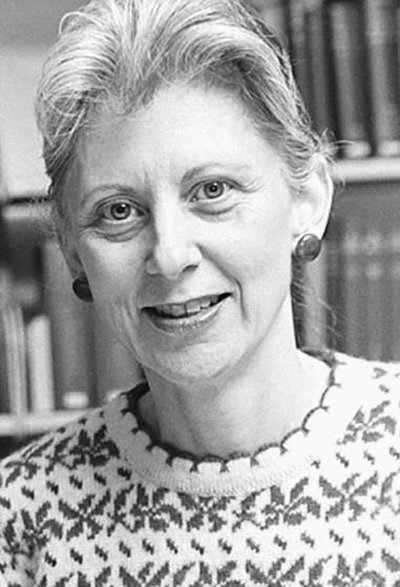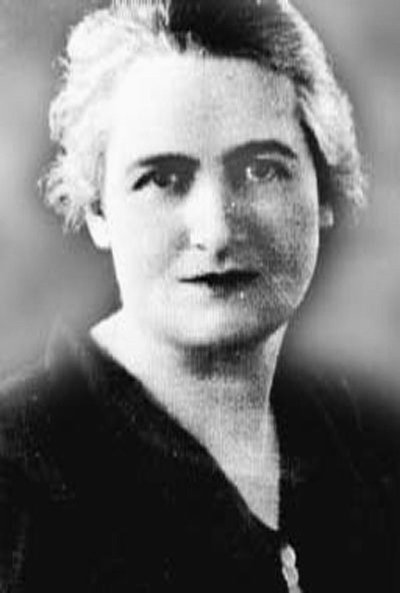January 24, 2002
In Search of Stories:Detective work leads ‘generalist’ to internment volunteer
At work, Linda Di Biase spends most of her time sleuthing the best publications for the University to purchase; on her own time she’s doing sleuthing of a different sort. The collection development librarian has a master’s degree in history as well as library science, and uses it to chase down information about “forgotten women” and then to write about them.
“Women tend to be self-effacing,” she says. “Society hasn’t looked at them as anything extraordinary and so they’ve tended to take that view themselves. So one has to be a detective to find things, to recognize the significance of their contributions.”
Di Biase had no trouble recognizing the significance of what Margaret Peppers did. The subject of Di Biase’s most recently published historical article was a Caucasian woman who worked with a Japanese-American church in Seattle and chose to accompany her congregation to an internment camp during World War II.
“She was the only white Episcopalian of either gender to be involved in day-to-day ministry there,” Di Biase says. “She was one of only two or three non-Japanese women to be ministering to the spiritual needs of people at the camp. Yet she didn’t seem to think it was anything remarkable. It was just something she knew needed to be done.”
Di Biase ran into Peppers’ story when she was writing a chapter for the centennial history of the Episcopal Diocese of Western Washington. She said she “always has feelers out” for women’s contributions while doing such projects because she knows they are so often undervalued. When she saw references to Peppers and what she did, she made a mental note that this was someone who deserved more attention.
Later, Di Biase found time to give her that attention. She started with the diocesan archives and then turned to the UW Libraries’ Manuscripts, Special Collections and University Archives, which has a “very strong” collection on the Japanese-American internment. She learned that Peppers had been widowed at an early age and had then received training to be an Episcopalian deaconess.
“Deaconesses were an order that was started in the 19th century and lasted until the middle of the 20th century,” Di Biase says. “It was a way for women who wanted to have a professional ministry in the Episcopal church to be able to do that because until the 1970s women were not allowed to be ordained as priests.”
Peppers was a missionary in the Philippines for a while, and then became a rural worker in Western Washington, serving in areas where the population wasn’t large enough to merit a church. Then, in the early 1930s, she was asked to work with two Japanese-American congregations.
One of those congregations — St. Peter’s in Seattle — has a UW connection. Herbert Henry Gowen (Gowen Hall’s namesake), the founder of the Asian Languages & Literature Department, was also the rector at Trinity Episcopal Church. With his enthusiasm for all things Asian, he established St. Peter’s as a mission and was instrumental in training a Japanese immigrant to take over the ministry there.
Peppers’ role was to work with the women’s guild and the Sunday school. She also worked in the same capacity with a rural congregation in the White River area where Japanese immigrants had truck farms.
“She worked especially with the second-generation Japanese and served a very important role in that case because they wanted to be identified with the country of their birth, not the country of their parents’ birth and to be more American than native-born Americans,” Di Biase says. “And so Margaret Peppers was someone that the young people could relate to — the girls especially — in ways that they couldn’t relate to their own mothers.”
When the order for internment came, the St. Peter’s congregation was first sent to an assembly center in Puyallup, ironically named “Harmony.” While they were there, Peppers and other friends of the Japanese-Americans ran errands for them and helped them take care of unfinished business they couldn’t do because they weren’t permitted to leave. From Camp Harmony, the group went to Camp Minidoka in the Idaho desert.
Though the nearest town was called Eden, the camp was hardly paradise. Its newspaper described it as “a vast stretch of sagebrush stubble and shifting, swirling sand — a dreary, forbidding, flat expanse of arid wilderness.” The paper reported winter temperatures as low as minus 21 and summer temperatures as high as 104. The camp consisted of 44 blocks, three miles from one end to the other, and at its peak was home to 10,000 people.
Peppers, Di Biase says, had to call on the influence of her bishops to get permission to be one of a handful of Caucasian church workers in the camp. But she wasn’t allowed to live there. She lived 20 miles away, in the town of Jerome, and made the drive every day.
At the camp, Peppers’ work was similar to what it had been on the outside — women’s guilds and religious education — but all Protestants were lumped together there so her flock was more diverse.
“We have this vision of the camp existing until the end of the war and then it went from 10,000 inhabitants to none,” Di Biase says. “But that’s not how it was. People began to be moved out in 1943, and it was a gradual process after that. Margaret Peppers stayed on until the very end. She and the Episcopalian priest, who was a Japanese-American himself, were the last to leave.”
Many of the Seattle group of internees — believing they would be more welcome elsewhere — did not return after the war. Peppers did return but not for long. She was soon off to Arizona, where she worked among the Navajo until her retirement. She died in 1952.
For Di Biase, learning about Peppers was just one of many personal research projects she’s taken on. She works 80 percent of full time in order to have time for her “other life.”
“I got into history as I got into library science because I’m a generalist,” she says. “I’ve never wanted to just focus my energies on one thing. I also enjoy people, and I see history as the story of people.”




